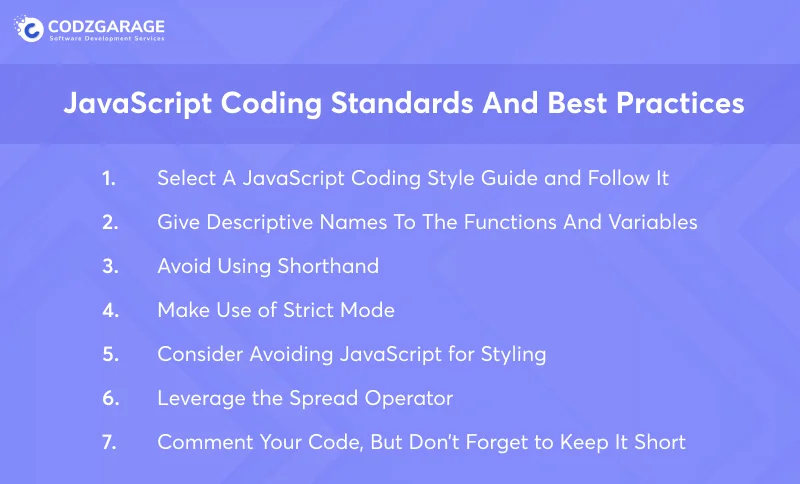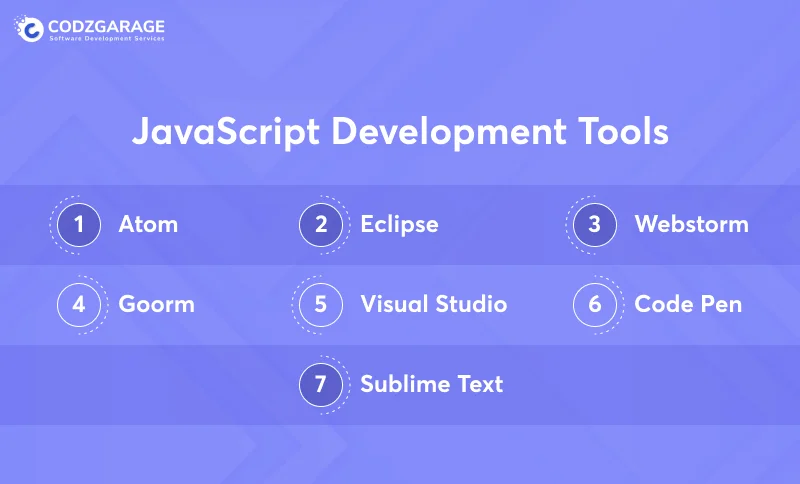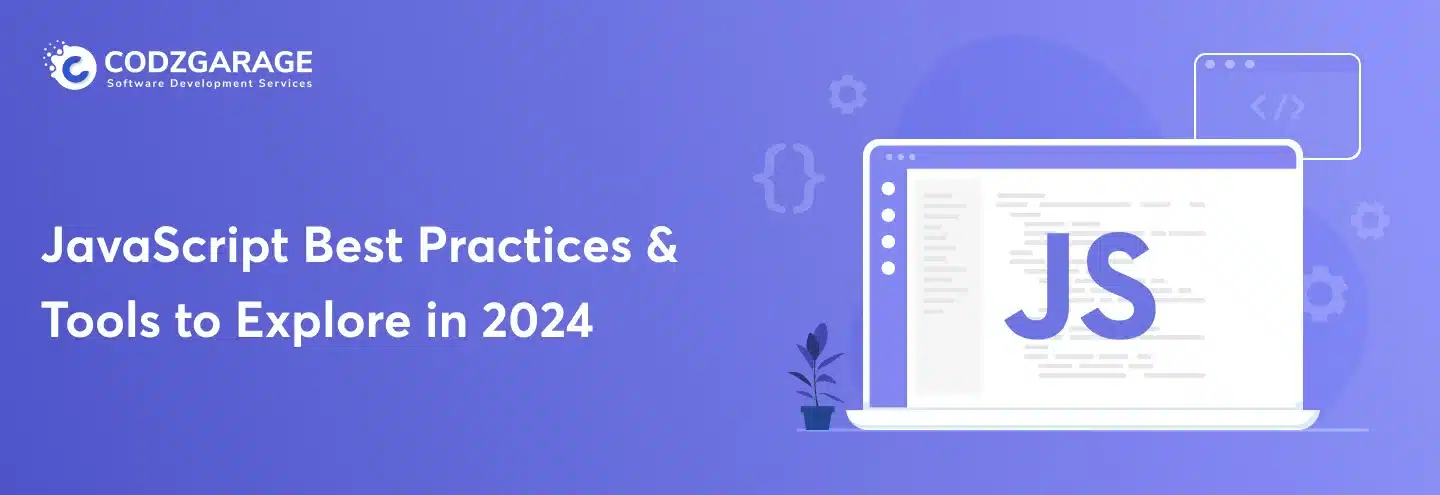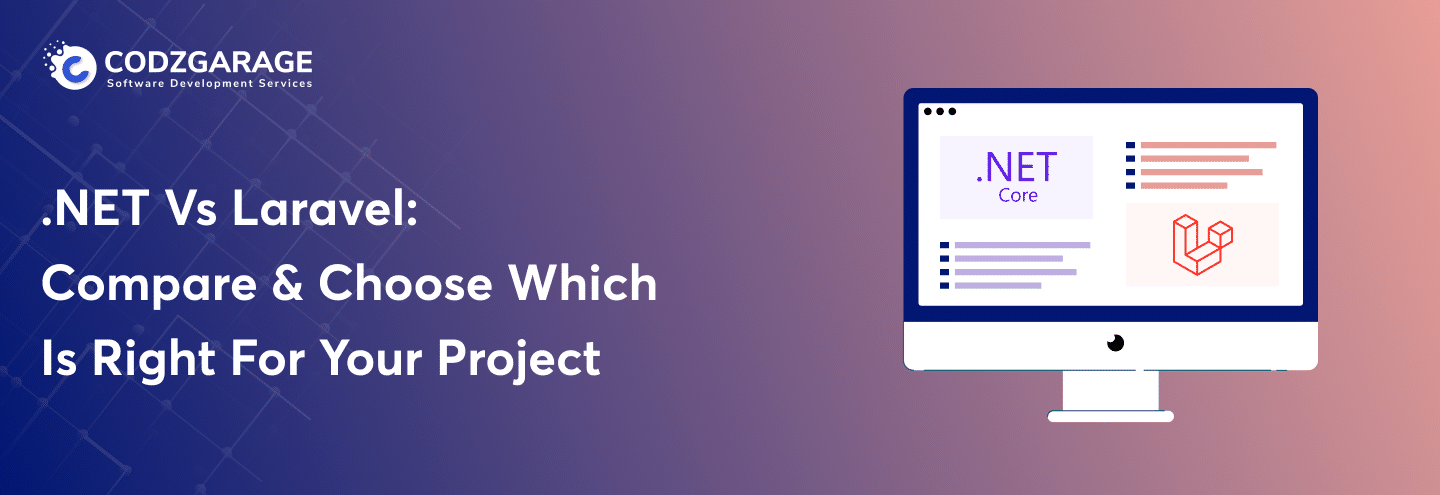-
2012
JavaScript Best Practices & Tools to Explore in 2024
Do you have JavaScript development projects? Then, you must be aware of the JavaScript best practices and tools. Get it by browsing through this informative guide!
Are you exploring JavaScript best practices? There are various programming languages used by mobile app development companies; however, JavaScript is one of them. It’s a robust programming language embedded with exceptional capabilities that influence modern software development. This guide lets you know the JavaScript best practices and tools to use so that you squeeze the most out of this technology.
Statistics say that JavaScript, as a client-side programming language, is used by approximately 98.8% of all websites worldwide. The programming language is used for various purposes and helps you create groundbreaking software solutions. You may or may not know that the most prominent web apps, for instance, Facebook, Twitter, YouTube, and the like, have been built using JavaScript. This guide will navigate you through intensive know-how on JavaScript best practices and tools, enabling you to embrace the optimal potential of this groundbreaking technology.
Codzgarage is a client-centric custom software development company providing comprehensive software development solutions to businesses from all walks of life. Contact us for a free consultation!
Let’s get started!
What Is JavaScript?
JavaScript is a platform-agnostic, object-oriented programming language used to make interactive web pages and software solutions. It enables development teams to create dynamically updated content, make use of animations, clickable buttons, pop-up menus, control multimedia, and the like. You can use JavaScript programming language for both client-side and server-side.
Languages like CSS and HTML are used to give structure and style to web pages; JavaScript is utilized to add interactive elements that can engage users. Need more clear insight? Explore our recently created “ Reactjs vs. React Native comparison guide– as both are based on JavaScript, you’ll learn more about the very programming language.
Why Is JavaScript So Popular?
Almost every computing device we use today has some contribution from JavaScript. These devices may be Android, iPhones, Windows, Linux, Mac OS, and the like. There are so many reasons why JavaScript is that popular; however, here are some of them, if we name a few!
- Capability to run on all devices.
- It can be used for both back-end and the front-end in web development
- Doesn’t require an environment setup.
- Anyone, from beginners and intermediate to advanced developers, can use JavaScript.
- Open standards and community.
- A variety of frameworks and libraries to assist you in creating even more complex applications.
- Transferred web browsers into app platforms.
- Works with DOM (document object model) for response to user interaction.
JavaScript Best Practices to Follow

In order to ensure your JavaScript code is efficient, bug-free, and maintainable, you need to follow the right practices. Some of the JavaScript best practices examples are avoiding Shorthand, strict mode, and the like. Here are some of the best JavaScript practices for writing high-quality JavaScript code.
Select A JavaScript Coding Style Guide, And Follow It
It isn’t necessary; however, you can set up your coding standards to achieve your goals. You should remember that various industry-accepted, ready-to-use JavaScript coding style guides have undergone comprehensive testing. JavaScript Style Guide for AirBnB, Google, and Idiomatic JavaScript can be some of the examples for the same.
You may be wondering why you should create and follow a style guide. A style guide is needed when an entire team of developers works on a single project. This is because, irrespective of the count of people working on a project, every code in a codebase has to appear as if it were created by a single person and not by a group. No matter whether you create a style guide or use a third-party one, the consistent code will be convenient to write, understand, manage, and debug.
Give Descriptive Names To The Functions And Variables
Make sure your code is interactive enough to understand, and whoever interacts with your code understands the terms of your procedures, variables, and additional code structure. Don’t forget to keep the words neither too long nor too short to ensure they convey your intent conveniently.
Besides, bear in mind that JavaScript is case-sensitive. The well-known naming convention made use of in JavaScript programming is camel case capitalization. Consider using upper camelCase for interfaces & classes and lower camelCase for methods & variables so that the code is convenient to read and understand.
Avoid Using Shorthand
There are individuals unaware of the negative impacts of Shorthand as a practice. You might be wondering why it is so, mightn’t you? This is due to the complexity of the code, and it tends to take longer to carry out the same commands.
Make sure you always make use of lengthier variable names and avoid the short ones, keeping your code simple to understand. Remain certain about your actions, review documentation continuously, be on the lookout for pertinent JavaScript code samples, and test the outcomes.
Make Use of Strict Mode
Since JavaScript is a dynamic programming language, there’s always feasibility for a missing variable to be generated and utilized without any visible problem. Once done, these mistakes are recognized only when they are looked into but not during execution.
Considering the above-mentioned conditions, you should use strict mode when you work with JavaScript or any other programming language like Ruby, Python, or the like. With strict mode, you get additional error checking that you would otherwise avoid, resulting in making the code safe.
Consider Avoiding JavaScript for Styling
Consideration of separation of concerns (SoC) is one of the most significant JavaScript coding practices. JavaScript enables you to modify CSS code automatically while making use of the appropriate style. It’s recommended to circumvent it, keep the debugging procedure simple, and enhance code maintainability. Besides, you may consider adding and removing classes availing of the ClassList API as an alternative.
Leverage the Spread Operator
Leveraging the Spread Operator is one of the best JavaScript practices. Have you ever found yourself in a circumstance where you needed to provide an array’s whole contents as an individual element to another function or to put the whole content of one collection to another? That’s when using the spread operator comes in handy. It allows and supports the competencies to act similarly.
Comment Your Code, But Don’t Forget to Keep It Short
Commenting is a widespread issue in programming. People may think that it doesn’t matter, but the reality is without comment, a code is more likely to be difficult to read, specifically when working on a legacy project.
Furthermore, lengthy and wordy comments aren’t necessary– as reading and comprehending them tends to be more complex and time-consuming. As a common guideline, comment on everything on your code, specifically classes, functions, interfaces, and objects, but don’t forget to only provide essential details and keep them as short as possible.
JavaScript Development Tools

Now that we’ve discussed the best JavaScript practices, we’re to move forward and explore some of the JavaScript development tools. Being aware of mere practices may not be enough; hence, an overview of the tools used by mobile app development companies is essential. So, without further ado, let’s get started!
- Atom— The first in the list, Atom is an open-source text and code editor for platforms like Windows, macOS, and Linux with support for plugging created in JavaScript and embedded Git Control.
- Eclipse— It’s one of the well-known open-source IDEs which supports several programming languages and platforms. These platforms may be Java, JavaScript, PHP, J2EE, and the like.
- WebStorm— One of the excellent JavaScript IDEs for front-end and full-stack development is WebStorm. The features offered by WebStorm support TypeScript, JavaScript, and many other languages.
- Goorm— Next up, we’ve Goorm, which is a cloud-based integrated development environment. It makes sure to complete multiple line codes automatically.
- Visual Studio— One of the leading JavaScript development tools, Visual Studio offers high-end debugging experience for JavaScript. It has robust features, for instance, code completion, code refactoring, code profiler, class designing, web design, and the like.
- Code Pen— Another one of the JavaScript development tools is Code Pen, which allows you to play CSS, HTML, and JavaScript. The tool is used for live previews along with the implementation of real-world scenarios.
- Sublime Text— Another one of the JavaScript development tools is Sublime Text, which is an open-source, platform-agnostic editor. The tool supports various programming languages, for instance, JavaScript, CSS, HTML, and the like. Furthermore, it also offers class alternatives.
Final Thoughts:
That’s all there’s to it! In order to create software that meets your expectations, there’s a need to follow the time-tested practices. Apart from this, utilizing ideal tools is essential. Considering this fact, we’ve created this article consisting of JavaScript best practices and tools to assist you in being aware of what to do and creating an app that meets your needs. Whether you want to hire ReactJS developers or want to connect with a ReactJS development company for your project, this article will be of great help. You can also connect with us if you want to build high performing applications on the top JavaScript programming language.
Want
Consultation?Our Expertise!
- 11+ years of experience
- Dexterity in JavaScript
- Timely delivery






 Kevin Bhut
Kevin Bhut 







